Publication
Article
Pharmaceutical Technology
Headed Up or Down? Pharma's Position in the Current Economy
Author(s):
Results from our annual employment survey.
Just as indicators are sending mixed messages about the health of the US economy—GDP is up, while job growth is sluggish—the Pharmaceutical Technology 2009 Employment Survey delivers contradictory messages about the pharmaceutical industry. Salaries are up over last year, job security is way down, and almost two-thirds of the 1500-plus respondents have been through some kind of corporate reorganization during the past year. Nevertheless, job satisfaction remains high with employees in the pharmaceutical industry indicating 3 to 1 that they feel valued by their employers, and more than 60% of respondents say it is unlikely or very unlikely that they'll change jobs this year.

(PHOTO: GETTY IMAGE)
Employment
Type of employer. Private industry remains the primary employer to 86% of respondents working for private companies. Academic institutions came in a far-distant second with 4%. The number of respondents who are self-employed, or work for government or nonprofit institutions came in even lower still. Among those who work in private industry, more than a quarter work for companies that employ over 25,000 people, 17% work for companies with 100-500 people, and 11% work for companies with fewer than 50 employees. As a result, most of these responses reflect life at privately held corporations of varying sizes.

(PHOTO: GETTY IMAGE)
Job function. At 17%, quality control and assurance professionals are the best represented job function of survey respondents, as has been the case in years past. Eleven percent are professionals in pharmaceutical development, retaining last year s second-place spot. Rising to third from last year s fourth place position, were production research and development (R&D) professionals, accounting for 8.8% of respondents, and relinquishing its third-place position, were professionals in pharmaceutical analytical development, who now occupy fourth place at 8.3%.

Table 1:Given the Opportunity, I Would Leave My Job
On average, workers report they were contracted to work for 27.8 hours, down from last year s average of 32 hours. Actual hours worked also declined from last year s 40 hours to 31 hours.
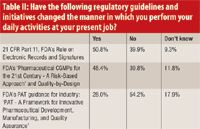
Table II: Have the following regulatory guidelines and initiatives changed the manner in which you perform your daily activities at your present job?
Job security
This year, job security is the big story, not unexpectedly in this time of extreme economic turbulence. An all-time low of 51% of respondents reported feeling secure in their jobs, down from last year s low of 55%.

Table III: Please rate the importance of the following types of knowledge in fulfilling the daily activities of your position
In contrast, 80% of respondents felt secure about their jobs in 2001. But if workers are feeling insecure, it's with good reason. Sixty-four percent of respondents report their company has gone through some kind of reorganization—a downsizing, restructuring, merger, or acquisition—this year. About 53% of those experienced some kind of job change as a result, primarily a change in function. About 7.4% of respondents left their jobs involuntarily, and about 4% said they left voluntarily.

Table IV: Please rate the importance of the following skills in fulfilling the daily activities of your position
Government workers feel the greatest job security, with 92.3% of those feeling sure that their jobs will continue to exist. Among academics, 69.6% feel secure, followed by workers in private industry with 49.5% reporting feeling secure. Least secure are workers in nonprofit organizations; 42.3% of these feel secure in their jobs. Interestingly, 60% of workers at nonprofit organizations say they would leave their jobs given the opportunity.

Innovation
PharmTech was interested in knowing how security tracked with job function and found that 75% of educators feel secure in their jobs, which put them at the top of the list. Next most secure are professionals involved in finished dosage-form manufacturing, with 65% reporting feeling secure, followed by about 63% in product management who feel secure. With about 35% feeling secure, workers engaged in pharmaceutical analytical development feel least secure, followed by those working in drug metabolism at 40%.

My Job Is Secure
Valued by employers. Most workers feel their work is fully valued by their employers. Most valued are experts in drug stability; almost 100% of these report feeling fully valued. Over 90% of workers in drug delivery and packaging also feel fully valued by their employers. At least 70% of workers in all other job functions feel fully valued, with the exception of two functions. Only 60% of workers in drug metabolism feel fully valued, but the rock bottom position belongs to workers in preformulation, with little more than 30% feeling fully valued by their employers.

My Job Is Secure
About 65% of preformulation developers say they would leave their jobs if the opportunity presents itself. Forty percent of workers in drug metabolism say they'd choose to leave their jobs. Workers in drug stability are least inclined to leave their jobs.

My Work Is Fully Valued by My Employer
Not all workers have the choice to leave. PharmTech asked how many felt circumstances would dictate that they change jobs in the coming year. It should come as no surprise that workers who feel most secure in their jobs are the least likely to foresee a job change in their near futures. In fact, of the more than 70% percent of those who feel it is unlikely that they'll be changing jobs this year also feel secure in their jobs. In contrast, among those who feel they're most likely to change jobs, only 24% feel secure.
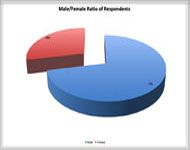
Figure 1: Respondents demographics.
A large number of respondents—almost 70%—feel their jobs make full use of their skills and education, while 12% do not. Interestingly, the best employer in that regard is oneself, as 96% of the self-employed feel they fully use their skills. At the other end, only 57.7% of workers in nonprofit organizations feel that way. Just under 70% of employees of private industry feel their skills are fully used, and just over 70% of academics feel their skills are fully used. Almost 77% of government employees feel their skills are used to the fullest extent.
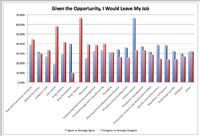
Figure 2: Respondents possibility of leaving job next year.
Attractive job attributes. Most important to employees considering a job change is income, as reported by almost 60% of respondents. Other important attributes when considering a new job are work/life balance (33%), intellectual challenge (32%), and geographic location (31%). Least important to job seekers are scientific opportunities (40%), vacation allotment (35%), and pension or retirement benefits (27%).
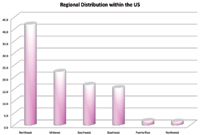
Figure 3: Regional distribution of respondents within the US.
Salary
The big surprise this year is that salaries were up universally. Whereas last year's average for workers inside and outside of the US was $85,087; this year's average was $94,079. The rise may be due to several factors, including the weakening dollar, which would make overseas salaries relatively higher than in years past. It may also be that when downsizing does occur, lower paying jobs are preferentially eliminated.
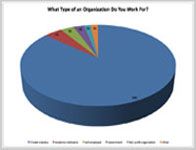
Figure 4: Organization type of respondents.
Employees received an additional $14,536 from their principal employers, including income from bonuses, grants, and summer work. Again, this figure represents an increase over last year s average of $10,892. Workers reported earning another $2860 from other professional work, more than $1000 over last year s earnings.
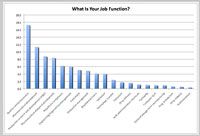
Figure 5: Respondents job function.
Not only are salaries on the rise in general, but it appears that the gender gap is closing in the US and abroad. Overall, men earned on average $97, 538, while women earned $85,995. The gap of a little more than $11,000 represents a decline over what has traditionally been a $20,000 gap. Interestingly, the gap is greater inside the US than it is overall. US men earned on average $110,981; women, $97,758.
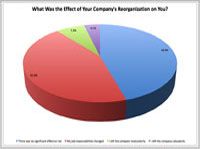
Figure 6: Effect of reorganization on respondents.
Salary by job function. The best paid workers in the pharmaceutical industry are not involved with pharmaceuticals at all. They work in information technology and information services and earn on average $123,462. Earning $111,372 on average, the second highest paying function is technology transfer. Other six-figure salary jobs are, in descending order: pharmaceutical development, regulatory compliance, engineering and engineering management, and drug delivery.

Figure 7: Respondents experience with downsizing.
Professionals in drug metabolism and production management saw a decline in their pay. These workers now earn on average less than the $100,000 they did last year. Least remunerative is education; educators earn $65,500 on average. Also toward the bottom are packaging professionals at $71,816, drug stability professionals, with an average salary of $72,287, and workers in preformulation development, with an average annual salary of $78,833.
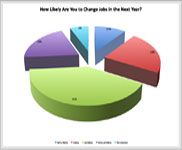
Figure 8: Respondents likelihood of changing jobs.
Salary by region. Pay rose over last year's averages for all regions within the US, with those in the Northeast continuing to garner the highest pay, with an average salary of $117,372, up from last year's regional average of $111,171. As in years past, those in the Southwest come in second with an average of $106,580, which also represents a rise over last year s average of $102,240. With an an average salary of $83,896, employees in the Northwest realized the lowest average pay but also enjoyed the highlest pay raise, reporting on average almost $9,700 over last year s average.
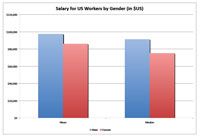
Figure 9: Respondents salary (US workers) by gender.
Essential skills, education, training, and knowledge
Respondents with bachelor s and master s degrees are approximately equal in number and each represent about one-third of respondents. At 28.9%, slightly fewer respondents hold doctorates, and a small percentage (4.5%) hold an associate's degree. The most common training was in pharmaceutics or pharmacy, representing 17% of respondents. This was followed by analytical chemistry (14.6%), and fields unrelated to pharmaceutics or science (11%). Over half of respondents were trained in the US (including Puerto Rico), followed by 12.7% trained in the UK, and almost 4% trained in India.
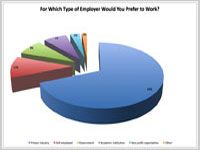
Figure 10: Respondents job preference.
About one-third of respondents felt their education prepared them extremely well for their current positions, with an additional half feeling their education to have been adequate. Six percent felt their education prepared them poorly for their current positions. In contrast, almost 97% of respondents felt their previous employment experiences prepared them for their current positions.
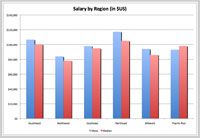
Figure 11: Respondents salary by region.
Among the types of knowledge that respondents rate as important in fulfilling their functions, good manufacturing practices (GMPs) came in highest, at 86%. Next in importance is process validation (74%), followed by the US Food and Drug Administration's quality-by-design initiatives (65.8%). Skills that respondents ranked as most important were computer-based systems, including database management (77.8%), chemistry (69.2%), and automation (52.3%). Least important were aseptic processing and isolation technology (40.4%) and biotechnology (46%).
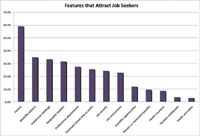
Figure 12: Attractive job features.
Among regulatory guidelines, respondents are most aware of 21 CFR Part 11, FDA's Rule on Electronic Records and Signatures (91.5%), follwed by 89% who are aware of FDA's "Pharmaceutical CGMPs for the 21st Century." Finally, 80% are aware of FDA's process analytical technology (PAT) guidance for industry. Respondents also report that these regulatory initiatives have changed the manner in which they perform their daily activities at their present jobs in the same order: 21 CFR Part 11 (50.8%), CGMPs (48.4%), and PAT (28%).
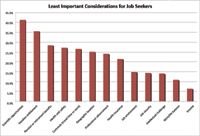
Figure 13: Job seekers least important considerations.
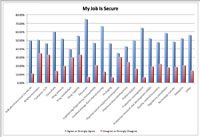
Figure 14: Respondents expected job security based on field.
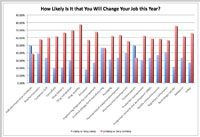
Figure 15: Respondents likelihood of changing jobs this year.
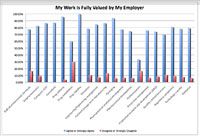
Figure 16: Respondents attitude about feeling valued by employer.
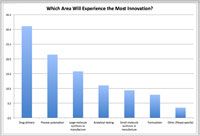
Figure 17: Respondents expectations for future innovation.
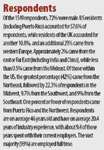
Respondents
Newsletter
Get the essential updates shaping the future of pharma manufacturing and compliance—subscribe today to Pharmaceutical Technology and never miss a breakthrough.





